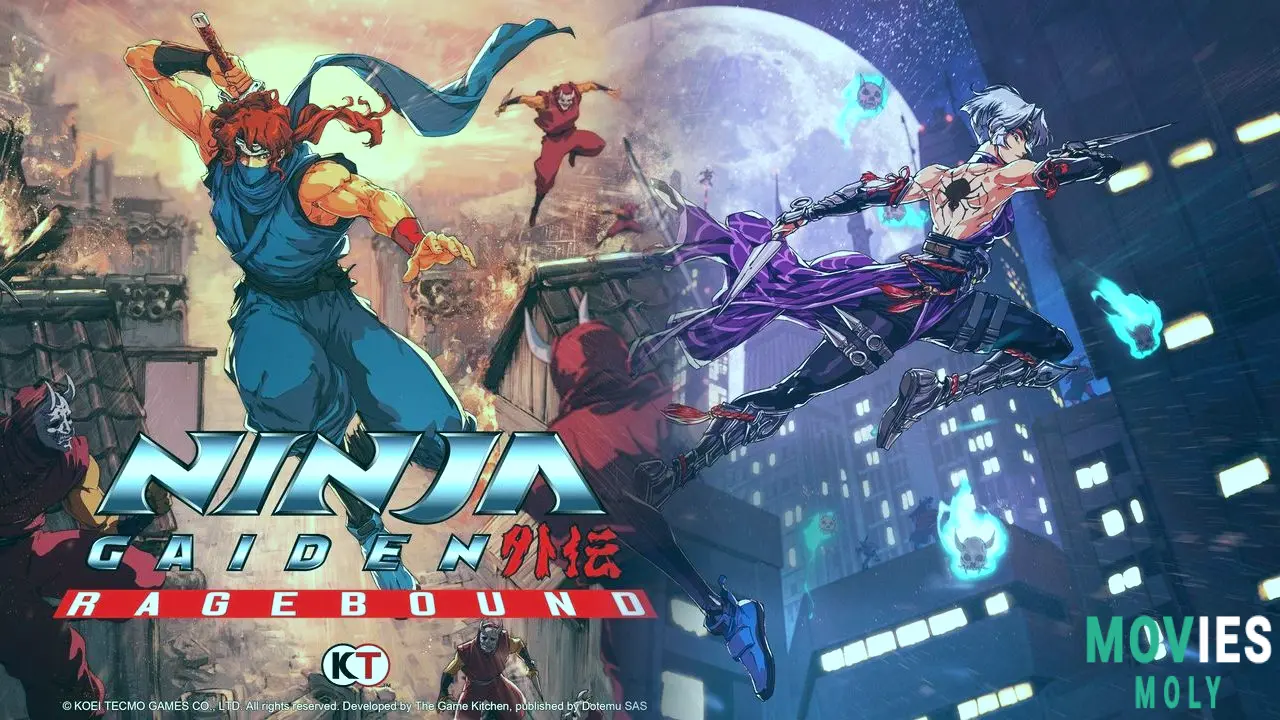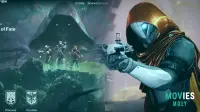We haven't had a proper Ninja Gaiden game in quite some time. Sure, there have been spin-offs and ports, but Ninja Gaiden: Ragebound is bringing the series back to life. Taking such a long pause raises an intriguing question: what would a Ninja Gaiden game look like in the Year of Our Lord 2025? Well, if Ragebound's return to 2D side-scrolling is any clue, the answer is "fing awesome." It's one of those rare games where everything just feels right, and I wish I was playing it right now.
Ninja Gaiden: Ragebound drops you right into the action as Kenji Mozu, a young student of the series' iconic protagonist and all-around badass Ryu Hayabusa. When Ryu is summoned away, Kenji is left to defend Hayabusa Village from an attack of demons. Meanwhile, the Black Spider Clan is attempting to steal power from those demons and has dispatched its kunoichi Kumori to apprehend the Demon Lord. Neither goes well, and the two of them are compelled to collaborate, attaching Kumori's spirit to Kenji's body so that they can both survive. The times are awful!
This isn't a story-driven game because Ninja Gaiden storylines are inherently silly. But what's here is plenty to motivate you to battle demons, and Kenji and Kumori's friendship is also enjoyable. The Hayabusa and Black Spider Clans have a long history of feuding, and combining these two characters provides an intriguing approach to explore that.
Introducing Ninja Gaiden: Ragebound, a modern 2D masterpiece.Ninja Gaiden: Ragebound's action is characterized by gorgeous 2D pixel visuals and a rocking retro-inspired music. It's a game that perfectly combines stunning pixel visuals, clever level design, and interesting gameplay to create one of the best retro throwbacks I've ever experienced. The developers intended to honor the roots and speed of the action from the 2D and 3D Ninja Gaiden series. They developed something that combines Ninja Gaiden's 2D and 3D foundations with Blasphemous.
Key gameplay mechanics include Hypercharge, Guillotine Boost, and Ragebound Arts.
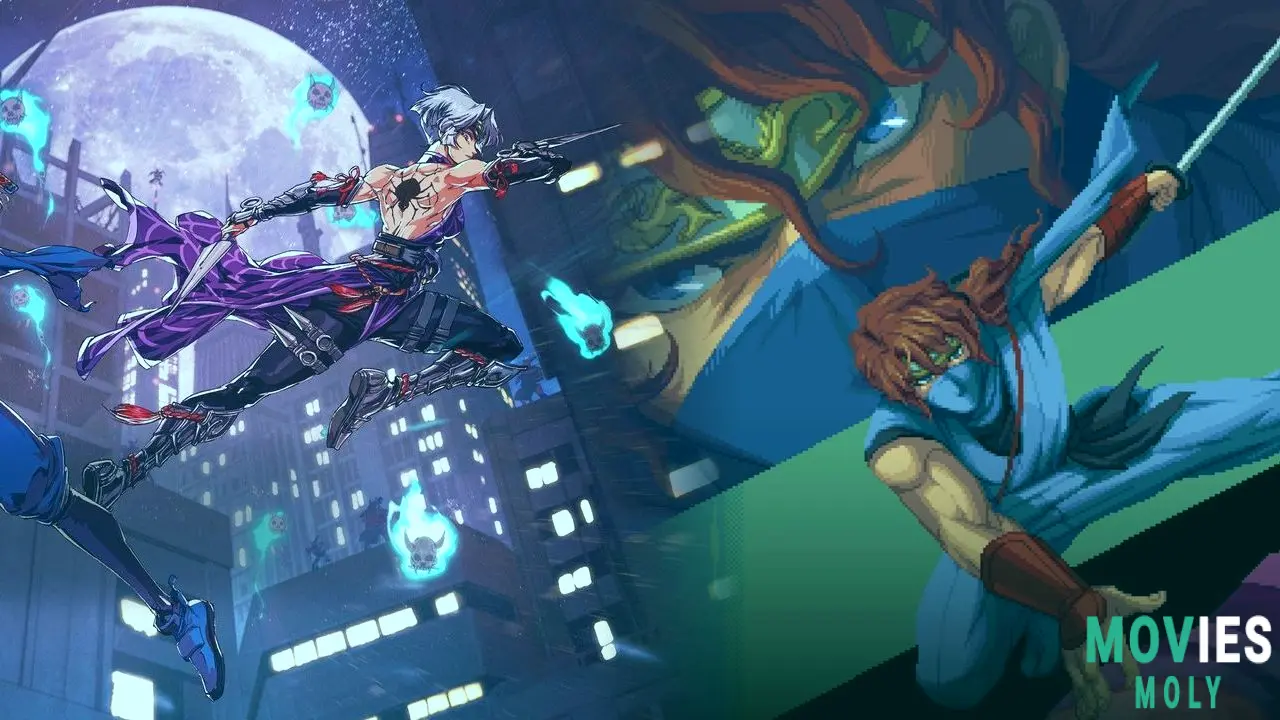
Kenji and Kumori don't have many moves at their disposal, but what they do have is more than enough to defeat demons while looking awesome as heck. Kenji has a standard katana, Kumori has a kunai, and both ninjas have a dodge and a lunging strike, but combining their skills makes things more interesting. Kumori grants Kenji access to her kunai and extraordinary weapons such as an arcing, throwable sickle and a chakram that boomerangs through opponents. These skills need ki, which regenerates as you attack enemies, thus picking your areas is essential.
Strategic Use of Hypercharged Auras
The Hypercharge is the major upgrade here. You can obtain Hypercharge by killing enemies with colored auras (or by remaining still and charging it for a few seconds at the expense of some health). When you have Hypercharge, your next attack kills foes instantaneously. The game makes Hypercharges more interesting by including a Simon Says feature that requires you to match specific attacks to specific aura colors. A blue aura, for example, signifies you must wield Kenji's sword, whereas a purple aura requires you to utilize Kumori's kunai. Once you have the Hypercharge, you can spend it however you want, but having to match the aura to the appropriate attack adds another element of strategy and effort. This is especially true if you're attempting to axe an aura-upped monster that is only on-screen for a few seconds - miss your window, and they'll flee, allowing skillful players to increase their scores even further when revisiting levels.
To perfect Hypercharge chaining, prioritize adversaries with auras. If you notice a blue aura, immediately swap to Kenji's katana. Prepare for purple with Kumori's kunai. The goal is to rapidly identify the color and execute the appropriate attack before the enemy flees or you unintentionally use the Hypercharge on a weaker foe. When confronting a tough enemy or boss, store your Hypercharge for their most vulnerable times to stun and inflict pain. It feels fantastic to pull it off.
Advanced Guillotine Boost Techniques
If the Hypercharge is the foundation of fighting, the Guillotine Boost is the heart of Ragebound's movement. This move allows you to bounce on almost anything. Once in the air, you can jump again when you're about to collide with an adversary (or a projectile) to assault them while also bouncing off of them for another jump. Is an enemy jumping at you? Bounce on it. A strange pumpkin-headed man flinging axes at you? Bounce on them. A boss is charging across the screen at you. Bounce on his head. Are there fireballs everywhere? Bounce on them, my child. This is beneficial for combat, but it is also useful for traveling to new locations. Sometimes you'll need to bounce on a projectile to avoid spikes, and other times you'll have to bounce up a staircase of enemies put just for that purpose to advance to the next level. Mastering the Guillotine Boost is the difference between a boss fight in which you are completely rolled and one in which the boss cannot touch you.
Practice timing for the best results with Guillotine Boost. It is not enough to simply press the jump button; you must do so as soon as you make contact. During boss bouts, this becomes your primary evasive and attack strategy. Look for patterns in opponent strikes and projectiles to exploit. Some levels even include ambient items meant expressly for Guillotine Boosting, so keep a watch out for these. It's a talent that will significantly improve your play.
The Impact of Ragebound Arts in Combat
The Ragebound Arts are insanely powerful techniques that Kumori can employ to clear the screen, replenish Kenji's health, or construct a shield to protect him from enemy attacks. Believe me, these movements are just as awesome as they sound. These are the ultimate "oh crap" buttons, but they're also useful for getting through difficult areas or doing tremendous damage to bosses. Use them wisely when you're swamped, under the weather, or need to make room. They have the ability to quickly change the course of a combat.
Meet the Heroes: Kenji Mozu, Kumori, and Ryu Hayabusa’s Legacy
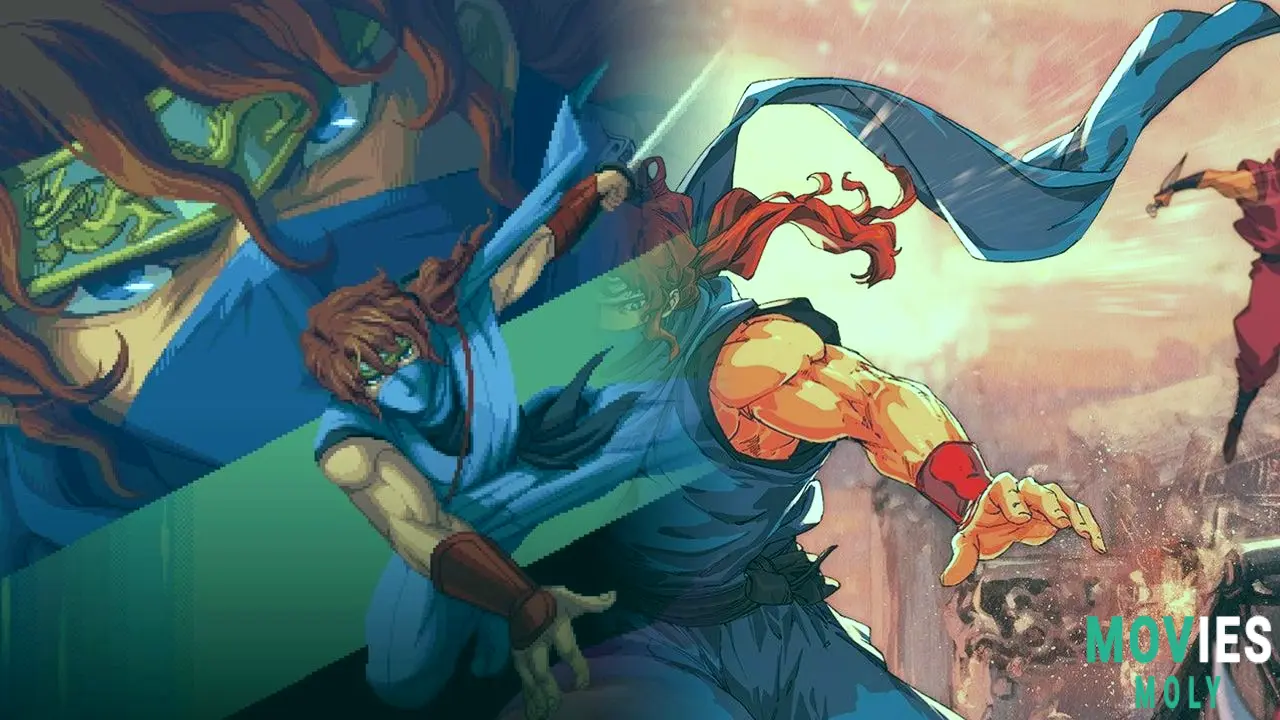
Ragebound puts you in the shoes of Kenji Mozu, a youthful disciple of the series' iconic protagonist, Ryu Hayabusa. Kenji's fate is connected with Kumori, a formidable new kunoichi from the opposing Black Spider Clan. Kenji and Kumori must overcome generational prejudices between their clans and employ forbidden tactics to fuse their powers and survive the upcoming conflicts, joining their fates together to share a test of soul and skill while maximizing their abilities.
Understanding Kenji's Katana and Kumori's Kunai.
Kenji's katana allows for swift, close-range attacks, making it ideal for combinations and ki building. Kumori's kunai, on the other hand, offers ranged attacks, letting you to damage adversaries from afar or activate purple auras for Hypercharges. Knowing when to transition between their different skills is critical for sustaining momentum and dealing with various adversary kinds. For example, Kumori's kunai is frequently more effective against flying attackers, whereas Kenji's sweeping katana attacks may be required against a group of ground enemies.
Exploring Hayabusa Village and the Black Spider Clan Lore
Ninja Gaiden: Ragebound begins right following the first seconds of the original NES Ninja Gaiden. The barrier between the human and demon realms has been breached, connecting the planet with a portal to darkness. Since Ryu Hayabusa has left the Hayabusa Village to avenge his father, Kenji Mozu, a young Hayabusa Clan Ninja, must emerge to defeat the forces of darkness. The game does an excellent job of reflecting the feud between the Hayabusa and Black Spider clans, even creating a hilarious dynamic between Kenji and Kumori.
Behind the pixels: The Game Kitchen's Vision and Blasphemous Influence
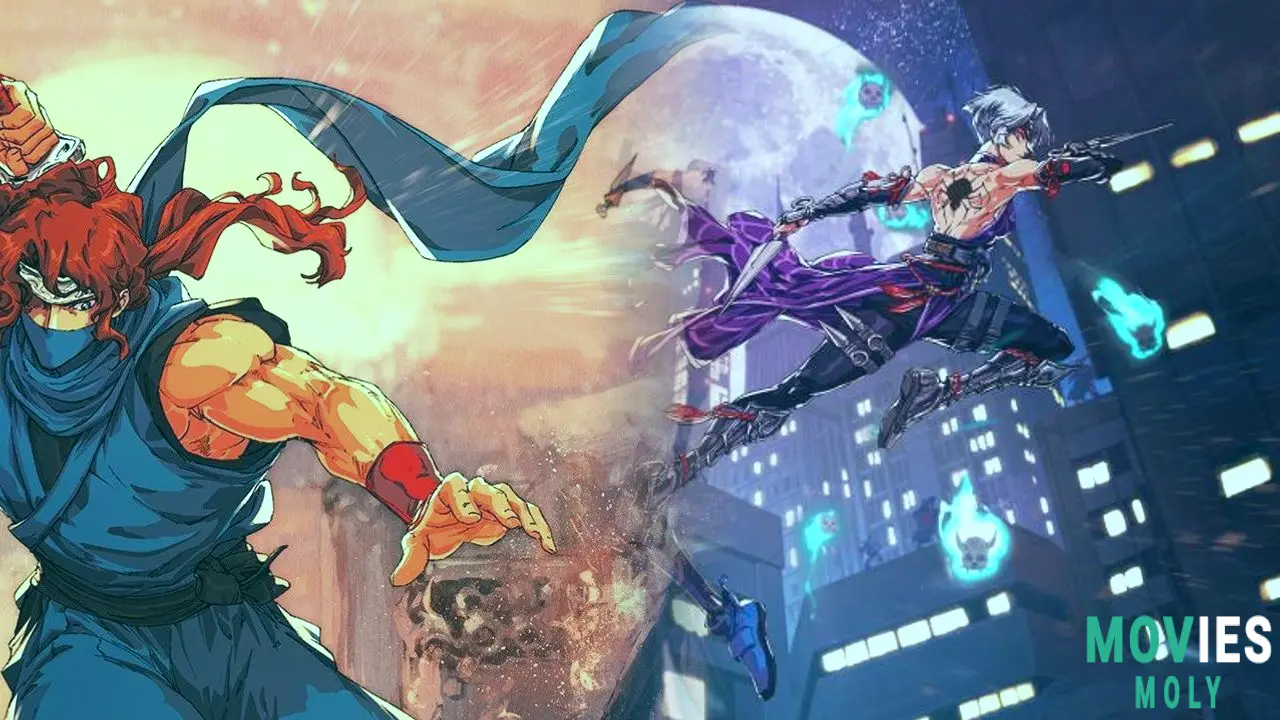
Ninja Gaiden: Ragebound's positive reception may be linked back to creator The Game Kitchen's previous video game series, Blasphemous. The Game Kitchen is a Spanish game studio that rose to prominence after launching a successful Kickstarter campaign and releasing Soulslike Blasphemous, a bleak, tough Metroidvania title with religious overtones that grabbed players. Their efforts with the Blasphemous games drew the notice of Dotemu, a publisher known for supporting small retro-inspired videogames.
The link is deep. Ninja Gaiden: Ragebound's silky-smooth animations in a 16-bit-like graphic style, as well as the difficult boss fights, appear to be reminiscent of the Blasphemous games. The Game Kitchen was able to apply their work on the Blasphemous games, particularly the significant increase in the pixel art and animation process from Blasphemous 1 to Blasphemous 2. The code base also shares a great deal of common technology and knowledge.
While Blasphemous is infamous for its slow pace, The Game Kitchen aimed to avoid it with Ragebound. Their goal was to bring all of those aspects up to current quality standards while maintaining their soul. The end result is something that combines Ninja Gaiden's 2D and 3D roots with Blasphemous. It combines the programming tools and experience of Blasphemous, the hack-and-slash action that keeps you moving from the 2D NES Ninja Gaiden games, and the feats of skill, stunning fights, and gore from the 3D Ninja Gaiden titles.
The Game Kitchen built something that combines Ninja Gaiden's 2D and 3D foundations with Blasphemous.
Our goal was to bring all of those aspects up to current quality standards while maintaining their character.
Mastering Ragebound's Challenges: Difficulty, Collectibles, and Playability
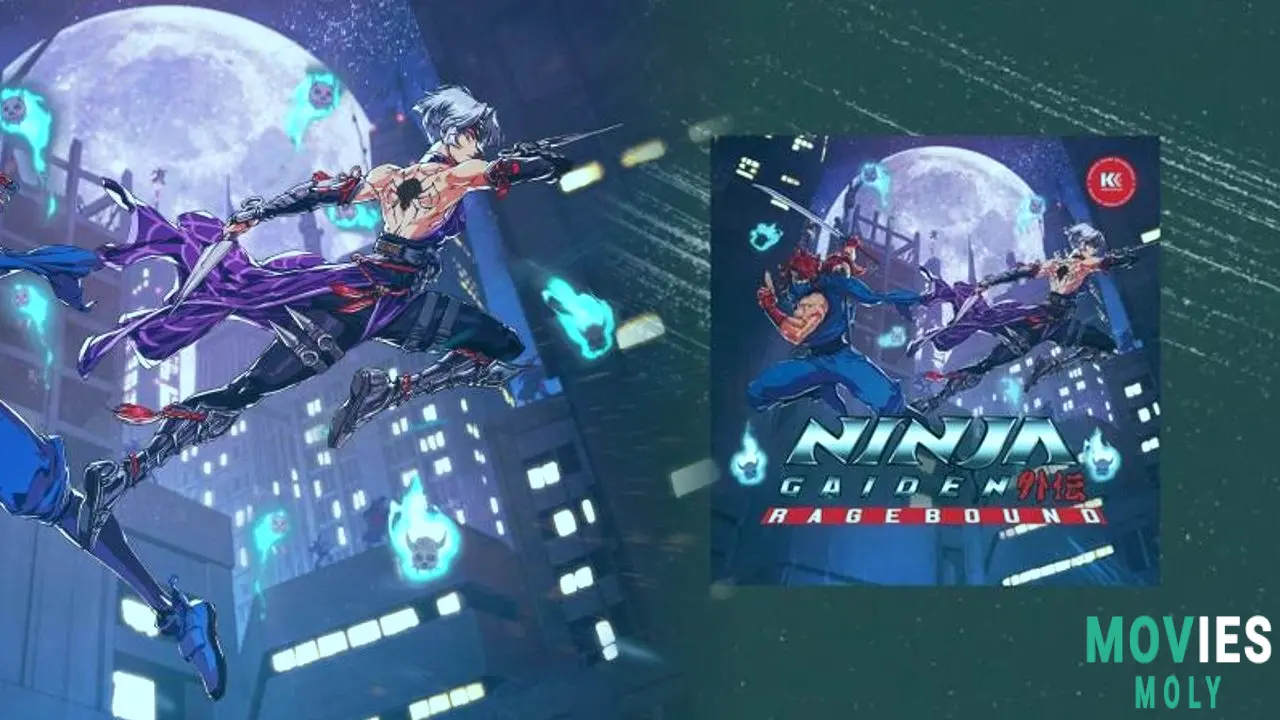
Ragebound is difficult to finish and much more difficult to master, but it is impossible to put down. It's demanding with few frustrations, engrossing with few lulls, and ultimately serves as a reminder that, while Ryu's modern-day adventures are enjoyable, there's still Ki to be discovered in Ninja Gaiden's original dimensions. Aside from boss fights, it's not as difficult as Blasphemous or any of the other Ninja Gaiden games it's based on. The Game Kitchen aimed to strike a balance between challenge and accessibility.
Optimizing Your Build with Talismans.
You can use the Golden Scarabs you acquire at Muramasa's shop to unlock and wear numerous talismans, such as one that recovers your health if you can maintain a combo chain or another that awards an automatic Hypercharge if you bounce on multiple enemies in a succession. These are significant improvements, but you can also select talismans that make things more difficult, such as forcing you to retake the level if you die in exchange for a greater final score. This is an interesting approach for increasing complexity, and I enjoy that it is there if you want it. For pure score chasers, these will become indispensable later in your adventure.
Locating Golden Scarabs and Crystal Skulls.
The levels are diverse enough that exploring and discovering their secrets, whether they be collectibles like Golden Scarabs or Crystal Skulls, is enjoyable. Some of my favorite portions in Ragebound revolve around the Demon Alters; Kumori may converse with them to gain entrance to the otherworld, separating her soul from Kenji's body and allowing her to travel where he cannot. She can still throw kunai as you explore new areas or gather trinkets. What's the downside? She must continually replenish a meter to remain in the otherworld. Otherwise, it's back to Kenji, and you have to start over. That means you may need to repeat a segment several times, but it still breaks up the action and provides a fascinating new obstacle to overcome.
Completing Optional Challenges and Secret Missions
Once you've completed a level, you can immediately return to it from the map, and you'll be scored based on your time, the number of collectibles you discovered, the number of monsters killed by your blade, and your best combo each time. Optional challenges include completing a stage without being hit, as well as level-specific tasks such as killing a set amount of foes with a lunge attack or defeating Ryu Hayabusa himself in the tutorial. Finishing both missions and scoring well on some stages earns you more equipable bonuses that you can't get with Golden Scarabs, so there's more to chasing a higher score than just being able to say you completed it.
The game also offers extremely difficult yet fantastic secret levels on the globe map to conquer at your leisure. The game's optional challenges and secret missions genuinely test your mastery. Don't be hesitant to try out different talisman builds and character skills to see what works best for each particular challenge. For example, a no-hit run may benefit from defensive talismans, whereas a high-score pursuit will necessitate talismans that increase your combo potential.
The soundtrack and art style are a retro-inspired feast for the senses.
Ninja Gaiden: Ragebound's release date teaser unleashes a flood of otherworldly horror that necessitates eagle-eyed evasion and razor-sharp accuracy. The game's pixel imagery is superb, echoing vintage 2D games while bringing beautiful locations and a scary cast of foes to life in strikingly intricate detail. The fast-paced action is complemented by an excellent soundtrack.
Ragebound seamlessly blends gorgeous pixel art, inventive level design, and sublime gameplay to create one of the best retro throwbacks I’ve ever played.
The Impact of Guest Composers on Ragebound's Score
The official soundtrack is available to stream for free. Guest composers Keiji Yamagishi, Ryuichi Niita, and Kaori Nakabai—creators of the original NES Ninja Gaiden trilogy soundtracks—have contributed to Ninja Gaiden: Ragebound. Leading the soundtrack is Sergio de Prado, best known for his work on the acclaimed Blasphemous series. Their contributions truly elevate the game's atmosphere, making every slash and jump feel impactful and nostalgic at the same time.
Ninja Gaiden: Ragebound: A Comparative Look at its Series RootsNinja Gaiden: Ragebound is an engrossing modernization of the tense, satisfyingly swift battles and precise, skill-demanding platforming the series is known for. It’s a game that makes a strong case for the Ninja Gaiden series to reclaim its home in the 2D plane. The Game Kitchen created something that's true to the NES ones but brought up to modern standards.
Comparing Ragebound's Difficulty to Classic Ninja Gaiden
Ninja Gaiden has always been known for its brutal difficulty, and Ragebound respects that. The boss fights in Ragebound feel right at home in the series’ storied canon of Greater Fiends and Otherwise Nasty Nemeses. They are all killer fights, and hard enough to test your knowledge of Ragebound’s systems, your ability to react on the fly, and your decision-making in just the right way. While it might not be as relentlessly punishing as some of the older NES titles, it still demands precision and quick reflexes, especially if you're aiming for those S-ranks or tackling the optional challenges. The assist mode options can make the game easier for struggling players, and special items can be bought for more challenge, striking a perfect balance.
When you take down that dude who’s been smoking you? Man, that high is incredible.
Beyond the Main Story: Post-Game Content and SecretsThe main path is roughly five hours long, though my playtime was nine hours because I replayed several levels and a few bonus levels. Once you clear the main path, you unlock a hard mode. There are also optional levels for an additional challenge. Ninja Gaiden: Ragebound wants you to play each level over and over again anyway.
Platform-Specific Performance Notes
Dotemu and The Game Kitchen are bringing Ninja Gaiden: Ragebound to Switch. While Ninja Gaiden: Ragebound doesn’t have a native Switch 2 port or a Switch 2 edition, those playing the Switch 1 version on Switch 2 can expect an improved performance over Switch 1 players. For PC, PlayStation, and Xbox players, the game runs smoothly, taking full advantage of higher frame rates and resolutions to make the pixel art truly pop and the action feel even more fluid. Load times are minimal across all modern platforms, ensuring you're always in the thick of the action.
Accessibility Features and Player Feedback
The Game Kitchen smartly chooses to focus less on punishing mistakes, backed by helpful checkpoints and accessibility options, instead emphasizing the pure adrenaline that comes with keeping up with its tempo. This includes assist mode options that can make the game easier for struggling players. This commitment to accessibility means more players can enjoy the game's core experience without feeling overly frustrated, while still allowing hardcore fans to crank up the difficulty for a true challenge.
The broader community reception has been overwhelmingly positive. Players are praising the tight controls, the satisfying combat loop, and the nostalgic yet fresh take on the classic series. Many have taken to social media to share their high scores and impressive combat chains, fostering a vibrant community around the game. It seems like everyone is just having a blast with it.
It’s one of those rare games where everything just feels right and when I'm not playing it, I want to be.
Only true ninjas will survive the relentless assault of blades, claws, and demonic enemies! Master the distinct abilities of Kenji and Kumori...
Ninja Gaiden: Ragebound is a game I’m going to be replaying for a long time. It looks and sounds incredible, and the fast but thoughtful combat is so damn satisfying that I had a hard time putting it down long enough to write this review. Juggling different types of attacks and powerful abilities as I break auras, time Hypercharges against intimidating foes, and bounce off of demons’ heads is a blast that is challenging and rewarding in equal measure. It just feels right. Ragebound may not star Ryu Hayabusa, but it’s definitely of the Dragon Lineage, and I know chasing level-specific challenges and high scores is going to be a part of my regular rotation. Ninja Gaiden fans, we were lost in the desert for a long time, but Ragebound is like running across an oasis; trust me when I tell you we’ve never been so back.

